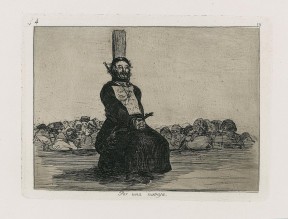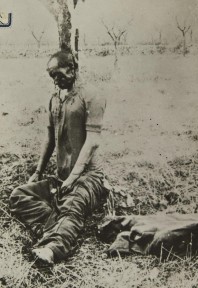Long before photography was invented in the beginning of the nineteenth century, Spanish painter and last of the Old Masters, Francisco Jose De Goya y Lucientes, known to the world simply as Goya (1976-1828), had anticipated modern photography through his etchings. A total of 82 these aquatint etchings by the artist – celebrated as an anti-war romantic – will be shown for the first time in India at an exhibition at the Spanish cultural agency Instituto Cervantes in New Delhi.
Also regarded as one of the early moderns, Goy spent his last years in Bordeaux in France – the same city where the exhibition will finally culminate after travelling around the world – because of his disillusionment with the Spanish monarchy. He was buried in this French city after his death in 1828 and it was nearly a century later that his remains were moved to Madrid.
Titled Goya- Los Desastres (The Disasters and War Photography), the exhibition reveals Goya’s expression of disdain for the savagery the Peninsular War (1808-1814) between France and Spain – or any other war for that matter – had unleashed. During this period, Goya had also painted some of his anti-war famous statements on canvas like The Charge of the Mameluks and The Third of May 1808. So powerful is his imagery that Goya is supposed to have later become a model for the work of a whole generation of artists including Edouard Manet, Picasso and Francis Bacon.
Goya’s etchings are reminder of the fact that the spectre of war remains with us. They do not debate who is right or wrong but give expression to the miserable consequences of war, and hence are supposed to have influenced the war photographers of a later generation as well. His prints, of unrestricted severity and sheer rawness, convey an underlying condemnation of the senselessness of war and its devastating consequences. Juxtaposed with his work are the pictures taken by the famous war photographers of that time – Robert Capa, David Seymour, Hans Namuth, Agustí Centelles and Alfonso Sánchez – that prove that nothing much has changed.
One can find shocking similarities between sufferings shown on his canvases and in the images shot by photographers in later centuries. A striking case is an etching showing a man tied to a pole in a sitting position, being executed for possessing a knife (pic above), while years later, an unnamed photographer (pic below) took a similar picture during the Spanish Civil War. These images, from the Civil War, have been sourced from the archives of the Biblioteca Nacional de Madrid (National Library of Madrid) and demonstrate the universal power of the images of Los Desastres.
The etchings, which have been thematically grouped, have been displayed against a black background with very dim lighting. With simple titles like Esto Lo Vi (I saw this), or Esto Sucedis (This happened), the works show just the bare truth of war. “Harsh lighting could have damaged the nearly 200-year-old prints,” says curator Juan Bordes, “this show can be viewed as the first example of graphic journalism in world history.”
“The objective of this exhibition is to extend Goya’s denunciation of war to our times,” Bordes adds, “These images act as an indignant thumping of fists on his etching table and directly touch our conscience. The opinions expressed, full of intelligent doubts and ambivalent sentiments on these prints, are a condemnation of man-to-man conflicts. His vehemence is undoubtedly singular. Nevertheless, Goya put his genius at the service of a cause that found no echo in his own society.”
Perhaps the debate can begin now.
The show is on at Instituto Cervantes, 48, Hanuman Road, New Delhi till
September 15, 2011. 11 a.m. to 7 p.m.
Poonam Goel is a freelance journalist and has covered the arts for over 15 years. She contributes on visual arts for various newspapers, magazines and online media. More about her on Story Wallahs. Write to her @
poonamgoel2410@gmail.com







